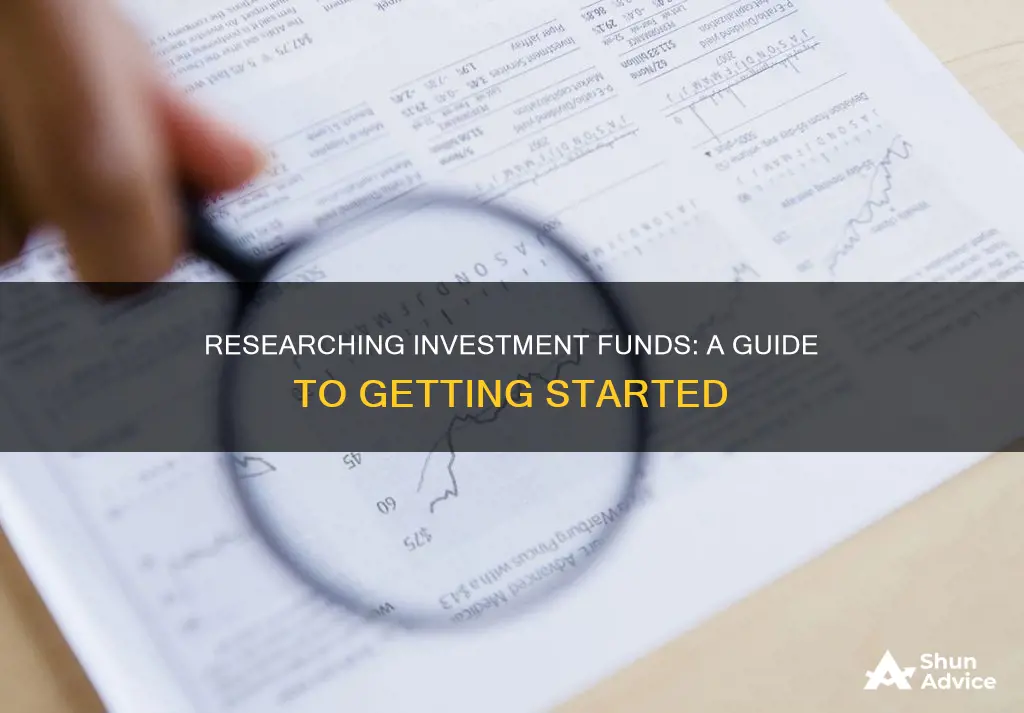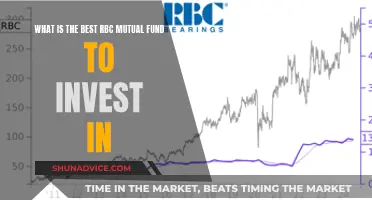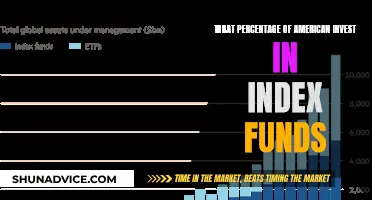
Researching investment funds is an essential part of an investor's due diligence. There are a variety of methods and tools that can be used to research investment funds and make informed decisions. These include utilising research platforms, analysing financial statements, news and research reports, and considering qualitative factors such as a company's competitive advantage and management team. Additionally, it is important to understand the different types of stock analysis, such as fundamental and technical analysis, and to familiarise oneself with key financial metrics and ratios. By combining these approaches, investors can gain a deeper understanding of investment funds and make more informed decisions.
| Characteristics | Values |
|---|---|
| Research platform | Quotes for individual stocks, company financial statements, key company statistics |
| Fundamental analysis | Revenue, earnings per share, price-earnings ratio, return on equity, return on assets |
| Technical analysis | Charts to detect tradable patterns |
| News and research reports | News reports, analyst research reports, social media |
| Stock screener | Build and save screens, compare individual stocks, view historical returns, screen funds |
| Qualitative stock research | How the company makes money, competitive advantage, management team, what could go wrong |
What You'll Learn

Research platforms
- Wealth of Information: Research platforms offer a wide range of data and tools, including quotes for individual stocks, company financial statements, news, and key statistics. This extensive information enables investors to make informed decisions about investment funds.
- Fundamental and Technical Analysis: Research platforms facilitate fundamental analysis by providing access to financial statements, revenue, earnings per share, and other essential metrics. They also enable technical analysis through stock charts and indicators, helping investors identify potential patterns and trends.
- Company Snapshot: Research platforms often provide a dedicated page for each company, known as a snapshot page. This page offers a detailed overview of the company, including its current stock price, average daily volume, annual yield, news, research reports, and other key statistics.
- Comparison and Screening Tools: These platforms allow investors to compare individual stocks against each other and against wider market benchmarks. Screening tools help investors identify investment opportunities based on specific criteria, such as growth potential or income generation.
- Customisation: Some research platforms offer customisation options, allowing users to tailor charts, news feeds, and other features according to their preferences. This personalisation enhances the user experience and makes information more accessible.
- Broker Integration: Many brokers offer research tools integrated into their platforms, providing a seamless experience for investors who already have brokerage accounts.
When choosing a research platform, it is essential to select one that suits your specific needs and preferences. Consider the range of features, data sources, customisation options, and ease of use to make an informed decision.
Mutual Fund Investing: A Comprehensive Guide for Beginners
You may want to see also

Fundamentals and technicals
Fundamental analysis and technical analysis are two schools of thought for evaluating investments and making trading decisions. While both aim to predict future price movements and identify profitable opportunities, they take very different approaches.
Fundamental analysis involves examining a company's financial statements and broader economic indicators to uncover a security's intrinsic value. This analysis gives the investment's true worth based on a company's financial health, the market, and economic conditions. Investors use fundamental analysis to gauge whether to invest in a company based on its current and projected worth.
Fundamental analysts search for stocks trading at prices higher or lower than their real value. If the fair market value exceeds the market price, the stock is deemed undervalued, and a buy recommendation is given. Conversely, if the fair market value is lower than the market price, the stock is overvalued, and the recommendation might be not to buy or to sell if the stock is held.
Fundamental analysis typically starts by analyzing a company's financial statements, including the income statement, balance sheet, and statement of cash flows. The information in these materials is used to calculate and assess a company's financial health and intrinsic value. Key ratios derived from these financial statements include the price-to-earnings (P/E) ratio, earnings per share (EPS), return on equity (ROE), and debt-to-equity (D/E) ratio, among others.
In addition to financial statements, fundamental analysis frequently involves looking at gross domestic product, inflation, unemployment rates, industry or sector trends, and the company's competition. This approach considers how a company should perform as a producer of goods and services, not just in the market. It also takes into account the effectiveness of the company's management team.
In contrast, technical analysis focuses on studying the historical price trends of a stock to predict short-term future trends. Technical analysts, sometimes called chartists, use charts and various indicators to predict future price movements. This approach is based on the premise that historical prices indicate market psychology, which can be used to predict future trends. Technical analysis uses price trends and action, often plotted on charts, to create indicators and identify patterns.
Technical analysis evaluates financial assets by reviewing the historical price and volume data. It examines the volume and price of shares over time, rather than focusing on the intrinsic value of an asset. Technical analysts believe that markets are inefficient, and price patterns and trends in market data can be exploited for potential profit.
Some of the tools used in technical analysis include technical analysis indicators (mathematical calculations based on price, volume, or open interest), volume analysis, relative strength, chart pattern analysis, candlestick pattern analysis, support and resistance, and trend analysis.
Both fundamental and technical analyses have their strengths and weaknesses, and many investors combine them to inform their decisions. Fundamental analysis provides a comprehensive understanding of a company's financial health and is particularly useful for long-term investment strategies. On the other hand, technical analysis allows for real-time decisions and is simpler to follow due to its use of graphical representations.
Mutual Fund Investment: Choosing the Right Funds for You
You may want to see also

News and research reports
- Company Updates and Recent Announcements: Research reports often highlight recent news and updates about a company, including product launches, clinical trial results, or earnings reports. This information is crucial for understanding the company's trajectory and can be found on the first page of most research reports.
- Analyst Ratings and Recommendations: Analysts' ratings and recommendations can carry significant weight, as they spend their time evaluating stocks. A "Buy," "Hold," or "Sell" rating can influence investors' decisions. However, it's important to note that "Sell" ratings are rarely given, and "Hold" ratings are less common than "Buy."
- Target Prices: Research reports often provide a specific target price for a company's stock, such as "The company is trading at $50 now, but we expect its price to increase to $75 in the next 12 months." However, this practice has been criticised for its low accuracy, as valuation is typically about a range of outcomes rather than a specific number.
- Investment Thesis, Catalysts, and Risks: While these sections might be shorter or treated as afterthoughts in research reports, they still provide valuable insights. Analysts may discuss potential catalysts for share price increases, such as capturing more market share or increasing product prices. Additionally, they may mention investment risks to provide a more comprehensive view.
- Industry and Sector Research: Some research reports, particularly "Initiating Coverage" and "Sector Reports," offer extensive industry research and data. These reports can be valuable for understanding the broader context of a company's performance and identifying trends within its industry.
- Financial Performance and Metrics: Research reports often include graphs, charts, and data detailing a company's financial performance, market share, and critical metrics and ratios. This information helps investors analyse the company's financial health and make informed decisions.
- Valuation and Comparable Companies: The valuation section of a research report is similar to that of a stock pitch, explaining the company's implied value. Analysts may use tools like DCF (Discounted Cash Flow) or DDM (Dividend Discount Model) to arrive at their valuations. They may also compare the company to its peers or similar transactions to support their assessments.
When reviewing news and research reports, it's essential to cross-reference multiple sources and conduct further analysis. While these reports provide valuable insights, they should not be the sole basis for investment decisions. Investors should also consider their risk tolerance, investment objectives, and time horizon when evaluating potential investments.
Lump Sum Investing: Choosing the Right Fund for You
You may want to see also

Stock screeners
To use a stock screener, you answer a series of questions to narrow down your options. These may include:
- Do you prefer large-cap or small-cap stocks?
- Are you looking for stocks at all-time highs or those with fallen prices?
- What is your preferred price-to-earnings ratio range?
- Are you looking for stocks in a specific industry?
Some popular stock screeners include:
- Yahoo! Finance
- StockFetcher
- ChartMill
- Zacks
- Stock Rover
- Finviz
- Trade Ideas
- FINVIZ
- TradingView
- TC2000
Index Funds: Choosing Your Path to Financial Freedom
You may want to see also

Qualitative research
- Understanding the Business: Qualitative research involves digging deeper into how a company makes money. This includes evaluating its business model, revenue streams, and whether its operations are easy to replicate or have a unique competitive advantage. For example, a clothing retailer might derive most of its revenue from selling clothes, but it could also have a significant income stream from franchising or consumer financing.
- Assessing the Management Team: The quality of a company's leadership can significantly impact its success. As an investor, it's important to research the management team's experience, industry knowledge, and alignment with shareholder interests. A diverse and independent board of directors that can provide objective assessments of management's actions is also a positive sign.
- Identifying Competitive Advantages: A critical aspect of qualitative research is identifying a company's competitive advantages, such as brand recognition, business model, innovation capabilities, patents, distribution networks, or operational excellence. These advantages create a "moat" that protects the company from competitors and helps sustain its market share over time.
- Analysing Industry Trends: Qualitative research should also consider the industry in which the company operates. Investors should focus on sectors with favourable long-term growth prospects, such as cloud computing, payments technology, e-commerce, or healthcare. Understanding industry trends and dynamics can provide context for a company's performance and future prospects.
- Risk Assessment: Qualitative research helps identify potential risks and red flags. This includes assessing the company's dependence on key patents, the impact of losing a crucial executive, the emergence of viable competitors, or technological changes that could disrupt their business model.
- First-Hand Experience: Getting out into the field and experiencing a company's products or services firsthand can provide valuable insights. This approach, advocated by investing legend Peter Lynch, involves trying new products, visiting restaurants or retail stores, and assessing their popularity and operational smoothness.
- Channel Checks: Conducting channel checks involves analysing the flow of products through the supply chain. For consumer or retail brands, this might include checking shelf space allocation at grocery stores, observing parking lot traffic at restaurants or retail shops, or gauging customer feedback and reviews.
By incorporating these qualitative research techniques, investors can gain a more comprehensive understanding of a company's operations, competitive position, and long-term prospects, enabling them to make more informed investment decisions.
Vanguard Index Fund: Minimum Investment Requirements and Opportunities
You may want to see also
Frequently asked questions
The first step is to familiarise yourself with the various research tools and platforms available. Many brokers offer research tools on their platforms, and you can also use a free online stock screener. These tools allow you to build and save screens, compare stocks, and view historical returns.
Start by reviewing the company's financial reports, such as Form 10-K and Form 10-Q, which are filed with the U.S. Securities and Exchange Commission (SEC). These reports provide key financial statements, including revenue, net income, earnings per share, and price-to-earnings ratio.
Qualitative research involves assessing the company's business model, competitive advantages, management team, and potential risks. Ask yourself: How does the company make money? Does it have a strong brand, innovative capabilities, or patents? Is the management team experienced and aligned with shareholder interests? What could be potential red flags or challenges for the company in the future?
It's important to look at the bigger picture by comparing the company's financial metrics and ratios to industry averages and competitors. Additionally, consider the company's historical performance to understand its resilience during tough times and its ability to deliver long-term shareholder value.







